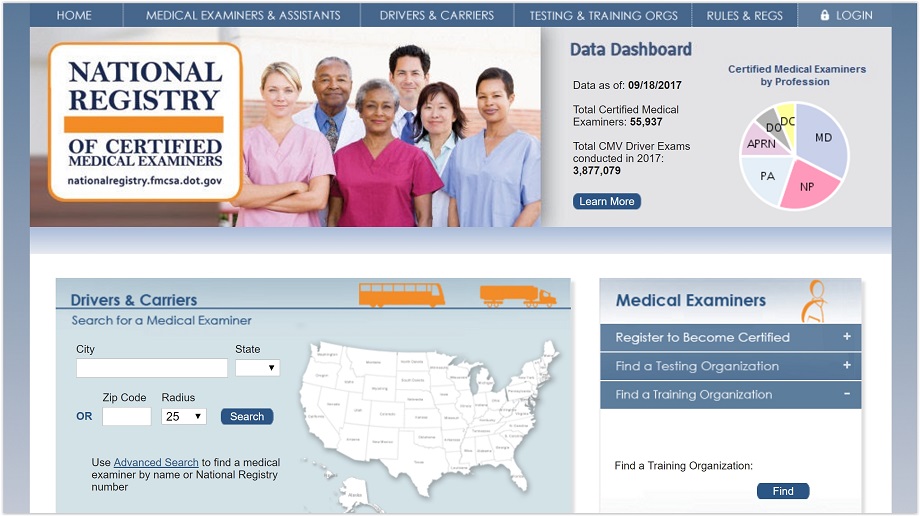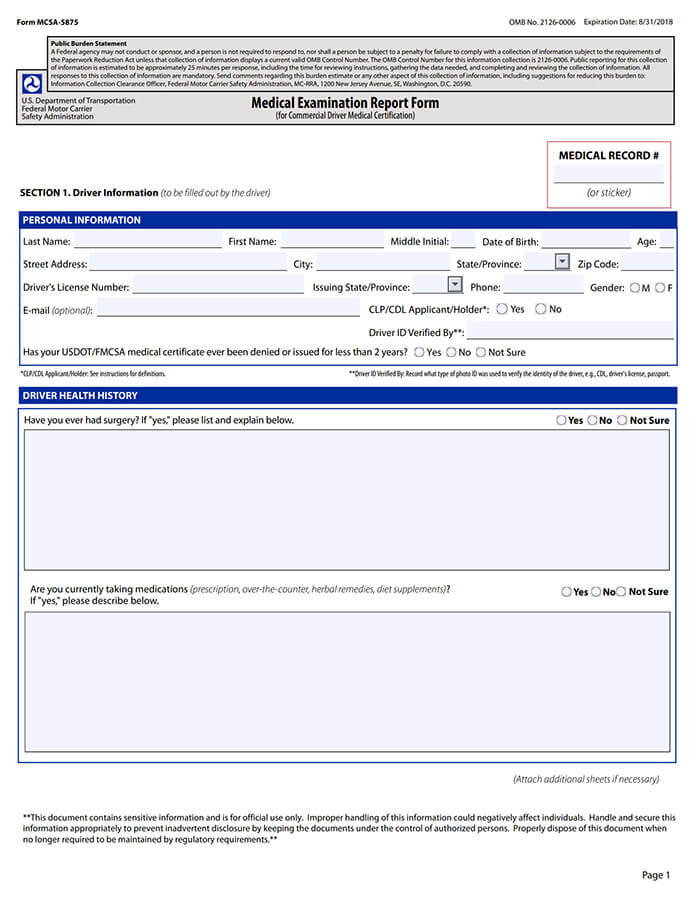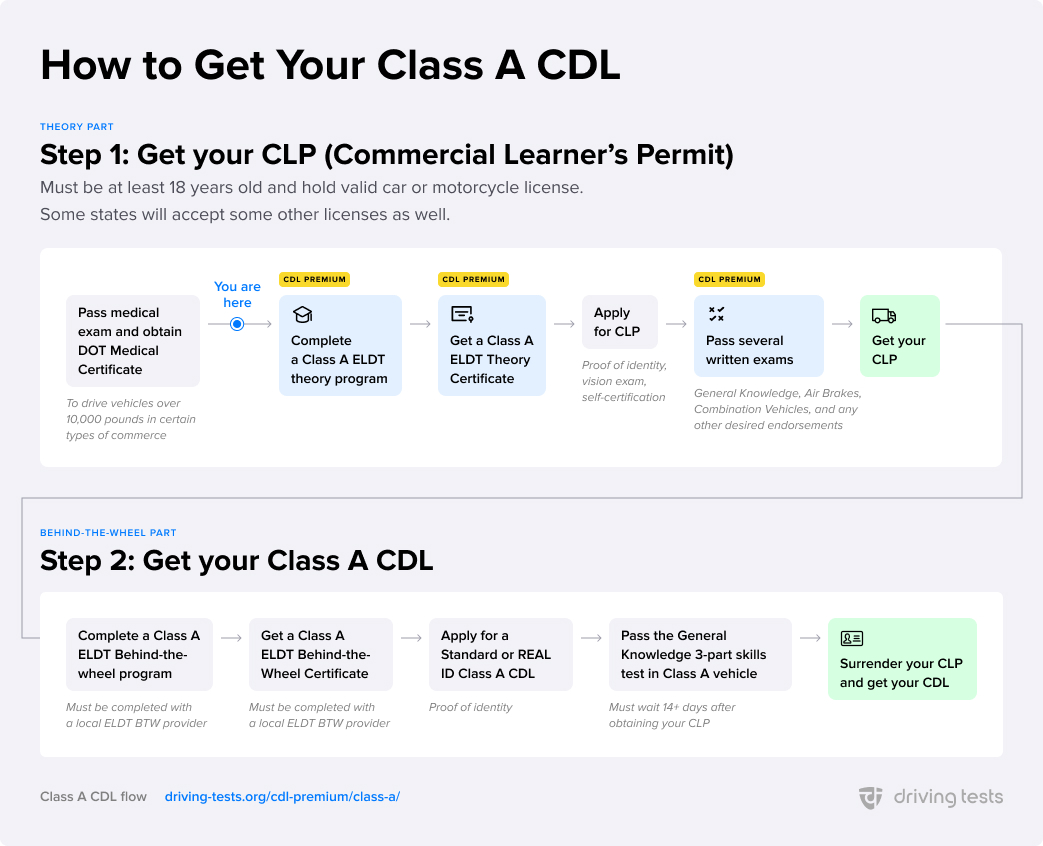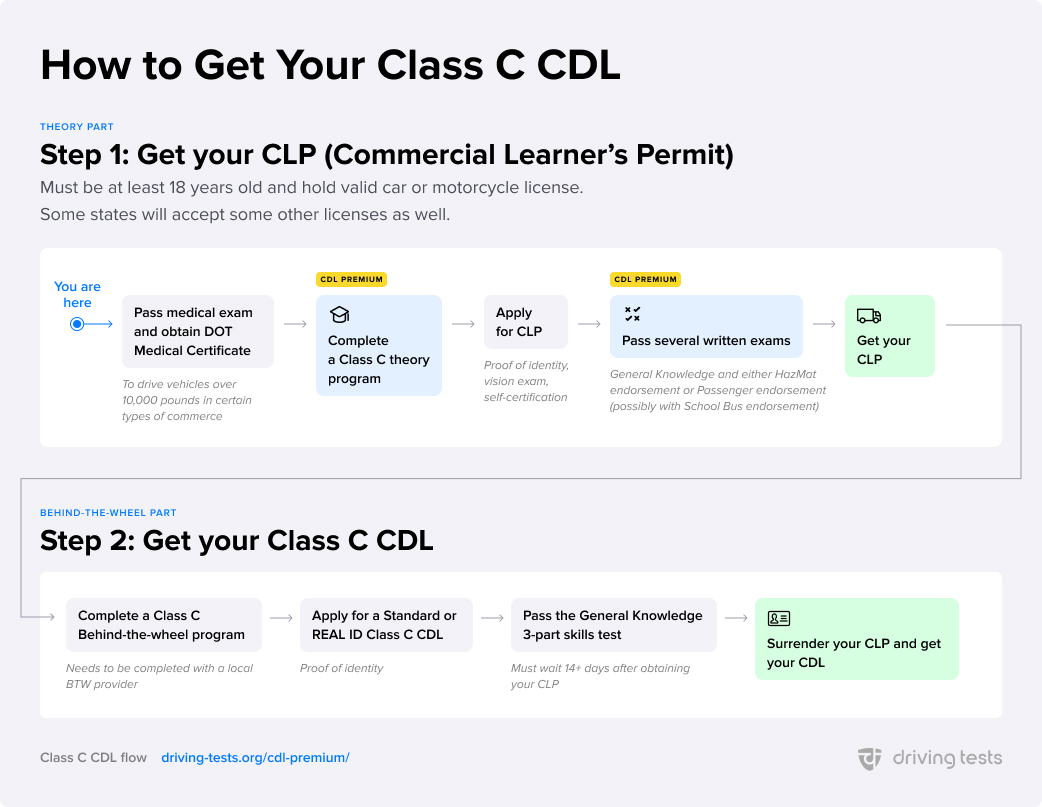How to Get a Commercial Driver License (CDL) in 2024: Step-by-Step Guide
Discover the specific steps for obtaining a CDL, including requirements for Class A, B, and C licenses.

Written by Andrei Zakhareuski. With over 16 years of expertise, Andrei leads Driving-Tests.org, a top online resource for driver education. His leadership has established vital partnerships with over 2,600 libraries, educational bodies, and state agencies.
Essential Steps for a CDL
Age Requirement
Minimum 21 years old for interstate driving, 18 for intrastate.
Driver Training
Mandatory FMCSA-approved training for Class A or B. More info.
Application and Fee
Submit your state’s CDL application and pay the fee.
Identity and SSN Verification
Provide proof of identity and Social Security number.
Proof of Residency
Show evidence of state and US residency.
Medical Documentation
Submit Medical Examination Report and Examiner’s Certificate Forms.
Vision Test
Clear a vision test.
Knowledge Exam
Pass the CDL knowledge exam.
Commercial Learner's Permit (CLP)
Obtain a CLP after passing the knowledge exam. Learn more.
Skills Exam Wait Period
Wait 14 days before scheduling your CDL road skills exam.
Pre-Trip Inspection
Pass a pre-trip inspection test.
Road Skills Test
Successfully complete the road skills test (vehicle required).
Finalization and Fees
Pay fees and potentially submit a 10-Year Record Check. More details.
Class A/B CDL Training: For Class A or B, complete theory and behind-the-wheel training from FMCSA-approved providers. Training records will be sent to the TPR, enabling you to take official tests.

Military Veterans: Veterans with relevant experience may waive certain written and driving tests. Documentation of military driving experience is necessary.
Did You Know? Trucks transport 70% of US freight, totaling over $670 billion – more than Switzerland’s annual income!

For all CDL types, basic requirements are federally set, but states may add more. For example, 21 years old is mandatory for interstate driving, but many states allow 18-year-olds to drive intrastate.
When applying, provide evidence of your social security number, identity, and residency. The accepted documents vary by state, so check your state’s DMV website or CDL manual for specifics.
Medical Fitness for Driving: Beyond the vision exam, you’ll need to submit the Medical Examination Report Form (MCSA-5875) and the Medical Examiner’s Certificate Form (MCSA-5876). After 2023, these forms are mandatory for all commercial drivers, regardless of intrastate or interstate travel.

Key Forms for CDL Applicants
- Medical Examination Report (MER) Form, MCSA-5875 Download
- Medical Examiner’s Certificate (MEC), Form MCSA-5876 Download


Find out how to obtain the CDL Class or endorsement you need:
Class-Specific CDL Requirements
How to Get Class A CDL

- Complete FMCSA-approved theory and BTW training.
- Pass CDL General Knowledge and Combination Vehicles tests.
- Bring a Class A vehicle to your road skills test.
- Consider Class A endorsements like Doubles/Triples.
How to Get Class B CDL

- Complete FMCSA-approved theory and BTW training.
- Pass the general CDL knowledge test.
- Bring a Class B vehicle to your road skills test.
- Obtain necessary endorsements (e.g., Air Brakes).
How to Get Class C CDL

- Pass the CDL General Knowledge test and get a CLP.
- Bring a Class C vehicle to your road skills test.
- Apply for required endorsements (Passenger, School Bus, Hazmat).
Things You Don’t Need
- A truck driving school is not mandatory.
- No need to purchase your state’s CDL manual.
Time and determination are your biggest investments in getting a CDL. Whether it’s Class A, B, or C, we’re rooting for you to hit the road soon!
Secure your CDL with confidence!
Our exclusive CDL Premium program offers comprehensive online training with an ELDT certificate, authentic exam questions, and a solid Pass Guarantee, starting at only $49. Ideal for first-time applicants, seasoned drivers, and those new to the U.S. road rules.
Was this page helpful?
